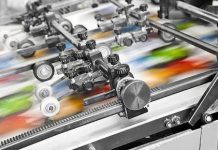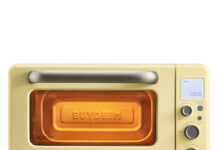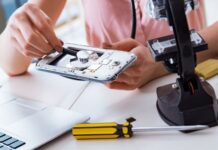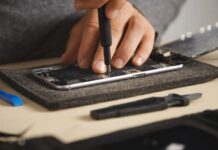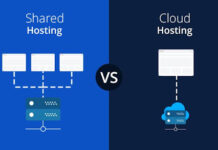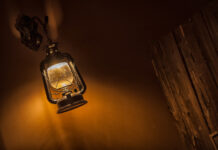In spite of what gives off an impression of being a clinical climate inside a recording audio studio, bewildering marvels can occur inside such a room with legitimate gear and skill. It has been an extreme year for performers and studios the same and what better method for maintaining them following a year loaded with difficulties than putting out a rundown of a portion of the remarkable keep studios in India this year. Building a recording audio studio is a HUGE task… right? It requires a very long time of arranging, exploration, and arrangement… isn’t that so?
Well, a great many people suspect as much, yet in all actuality…
Getting everything rolling is far more straightforward than you could envision. Since REALLY… all you want is a couple of fundamental things. Furthermore, in the present post, I’ll show you precisely what they are. As I walk you bit by bit through the whole course of building a fundamental home recording studio without any preparation.
Recording Audio Studio Essentials for Beginners
Is it safe to say that you are a hopeful craftsman who needs to assemble your own recording studio? They say start little, however, where do you truly begin?
Having a home recording studio is something currently turning out to be genuinely normal among music makers, specialists, and even specialists. The thing about the advanced recording studio today – is you truly needn’t bother with a lot to begin creating music.
The accompanying aide is an essential guide for amateurs exploring the universe of home recording. You’ll likely observe that toning it down would be best, and a straightforward setup can yield astounding outcomes!
A few Essential Items
A home recording studio basically comprises these 10 fundamental things:
1. PC (Desktop/Laptop)
Your PC will be the core of your studio. From recording, creating, and orchestrating to blending – you’ll do a large portion of the work on a PC. As a rule, a PC or work area PC with no less than 16GB of RAM, running on a Core i5 processor is a decent beginning.
2. Sound Interface
The point of interaction is an equipment part that interfaces mouthpieces or different instruments to your PC. In the most straightforward sense, it gives I/O for your studio and conveys sound messages to your DAW for recording, ordinarily through USB.
3. Microphones
There are numerous sorts of amplifiers you could purchase for your studio – contingent upon the recording you’re intending to do.
Be that as it may, on the off chance that you can get one amplifier, I’d recommend spending your cash on a strong condenser receiver, similar to the Rode NT1-A.
4. DAW Recording Software
The advanced sound workstation (DAW) is the product you’ll use to record, alter, blend, and expert sound, make MIDI courses of action and perform anything more you can envision. Everything occurs in the DAW, so pick one and learn it well!
Whether you pick Pro Tools, Logic Pro X (Mac-just), Digital Performer, Ableton, Cubase, Reaper, Garageband, or some other DAW, depends on you. Each is a feasible choice that plays out a similar arrangement of fundamental undertakings in a marginally unique manner.
5. Studio Headphones
To have the option to screen while recording or perhaps to blend and dominate in a hurry, you’ll require a nice set of earphones (called ‘jars’ now and again) that can repeat sound as precisely as could be expected, without shading it.
6. Studio Monitor Speakers
with regards to blending, involving screens in a treated room is ideal. Get yourself a couple when everything looks good! In any event, however, earphones are an unquestionable necessity for following and are tolerable for blending. In the beginning phases of building your home apparatus, jars are the more reasonable and less hostile (commotion wise!) choice.
7. Mouthpiece Stands
While numerous novices accept that all mic stands are something very similar. Truly… a strong mic stand is one of the most advantageous ventures another home studio can make.
Nonetheless, mic stands can get expensive, and most fledglings are on limited financial plans. A modest dependable stand is above and beyond when you’re initially beginning.
8. Sound links
One frequently disregarded fundamental thing is the sound links…
Links are very common, yet for fundamental home recording audio studio arrangements, you just need the accompanying links:
- XLR link for a receiver
- TS link for interfacing instruments (if pertinent)
- Speaker links for your studio screen
- Sound connection point links
9. Pop Filter
That’s what you know “buzzword” scene from the motion pictures. Where a youthful delightful pop star is in the studio. Recording her vocals through some baffling lattice screen covering her receiver? Well that, old buddy… is a pop channel.
Furthermore, its motivation (other than looking cool) is to sift through horrendous vocal antiquity known as “popping”. Which is a low recurrence impact of air brought about by the way to express “P” and “B” sounds.
Is it a “must-have” thing for your studio? By no means. Yet, they’re really modest, and they do help. What’s more, oddly enough, numerous fledglings actually feel they should have one, which is the reason I’ve remembered it for this rundown at any rate.
10. MIDI Keyboard
In the event that you intend to involve virtual instruments in your creations, a MIDI console/regulator is vital. Physically attracting MIDI information to a DAW is a dreary business. Having the option to stack up the ideal instrument and actually play it continuously is a substantially more recognizable/melodic experience. Besides, a considerable lot of them have drum cushions as well, permitting you to “play” all of the MIDI data you may utilize.






